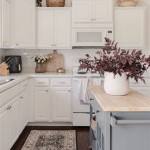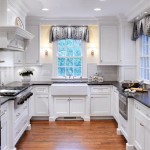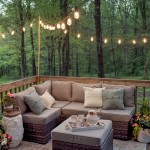Middle Eastern Home Decor Ideas: A Journey of Style and Tradition
Middle Eastern home decor reflects a rich tapestry of history, culture, and artistry. It is characterized by vibrant colors, intricate patterns, and a focus on comfort and hospitality. This design style draws inspiration from various regions, including North Africa, the Levant, and the Arabian Peninsula, resulting in a diverse and captivating aesthetic. Incorporating elements of Middle Eastern design can infuse a sense of warmth, elegance, and cultural depth into any home.
This article explores key aspects of Middle Eastern home decor, providing insights and ideas for creating spaces that resonate with the beauty and spirit of this captivating design style. We will delve into essential elements such as color palettes, textiles, furniture, and decorative accessories, offering practical guidance for integrating them effectively into contemporary living spaces.
Embracing Rich Color Palettes
Color plays a crucial role in Middle Eastern decor. Traditional palettes often feature warm and earthy tones, reflecting the desert landscapes and sun-drenched architecture of the region. Think of terracotta reds, ochre yellows, and sandy beiges as foundational colors. These warm hues create a sense of groundedness and tranquility.
However, Middle Eastern design is far from monotone. Vibrant accents are essential for adding depth and visual interest. Jewel tones such as sapphire blue, emerald green, ruby red, and amethyst purple are frequently used to evoke a sense of opulence and luxury. These colors can be incorporated through textiles, rugs, and decorative accessories.
Consider using a neutral base for walls and larger furniture pieces, and then layering in pops of color through smaller items. This approach allows for flexibility and prevents the space from becoming overwhelming. For example, a living room with beige walls and a cream-colored sofa can be enlivened with sapphire blue cushions, a ruby red rug, and emerald green plants.
Another important consideration is the use of metallic accents. Gold and silver are frequently incorporated into Middle Eastern decor, adding a touch of glamour and sophistication. These metals can be used in light fixtures, mirrors, furniture hardware, and decorative objects. A gilded mirror or a silver-plated tea set can instantly elevate the elegance of a room.
The Significance of Textiles and Patterns
Textiles are integral to Middle Eastern home decor, contributing warmth, texture, and visual interest. Intricate patterns and rich textures are hallmarks of this design style. Common patterns include geometric designs, floral motifs, and arabesque patterns, which are characterized by flowing, interlacing lines. These patterns can be found on rugs, cushions, curtains, and upholstery.
Rugs are perhaps the most iconic textile in Middle Eastern decor. Persian rugs, known for their intricate designs and high quality, are a classic choice. However, there are many other types of rugs that can be used to create a similar effect, such as kilim rugs, which feature flat-woven designs, and Moroccan rugs, which are known for their bold colors and geometric patterns.
When selecting rugs, consider the size, shape, and color palette of the room. A large rug can anchor a seating area and define the space, while a smaller rug can be used to add a pop of color or pattern. Choose rugs that complement the other elements in the room and create a cohesive look. Rugs should also be chosen concerning durability and the amount of foot traffic expected.
Cushions are another essential textile element. They provide comfort and visual interest to sofas, chairs, and benches. Mix and match cushions with different patterns, textures, and colors to create a layered and inviting look. Consider using cushions with embroidery, tassels, or other embellishments to add a touch of detail.
Curtains are also important for controlling light and adding privacy. Opt for curtains made from luxurious fabrics such as silk, velvet, or brocade. Choose colors and patterns that complement the other textiles in the room. Consider using sheer curtains to allow natural light to filter through, while heavier curtains can be used for privacy and to block out light.
Furniture and Decorative Elements
Middle Eastern furniture often features intricate carvings, inlaid details, and rich upholstery. Low seating is common, creating a relaxed and inviting atmosphere. Consider incorporating elements such as floor cushions, poufs, and low tables into your living spaces.
Metal accents are also prevalent in Middle Eastern furniture. Brass and copper are frequently used for decorative hardware and inlaid details. These metals add a touch of warmth and sophistication to furniture pieces. Look for furniture with intricate metalwork or consider adding metal accents to existing pieces.
Lighting plays a crucial role in creating the right ambiance. Ornate lanterns, chandeliers, and sconces are commonly used to provide soft, diffused light. These fixtures often feature intricate designs and are made from materials such as brass, copper, and glass. Consider using dimmer switches to control the intensity of the light and create a more intimate atmosphere.
Decorative accessories are essential for adding personality and character to Middle Eastern homes. Consider incorporating elements such as intricately carved wooden boxes, ceramic vases, metal trays, and glass lanterns. These items can be used to display flowers, candles, or other decorative objects.
Water features are also a common element in Middle Eastern design. Fountains and water features can be used to create a sense of tranquility and relaxation. Consider adding a small fountain to a courtyard or garden, or incorporating a water feature into an indoor space.
Plants are another important element in Middle Eastern home decor. Olive trees, palm trees, and citrus trees are commonly used to add greenery and create a sense of connection to nature. Consider incorporating potted plants into your living spaces or creating a small indoor garden.
Finally, the use of natural materials is a key characteristic of Middle Eastern design. Wood, stone, and metal are all commonly used to create a sense of authenticity and warmth. Consider incorporating these materials into your furniture, flooring, and decorative accessories.
By thoughtfully integrating these elements, one can create living spaces that reflect the beauty, elegance, and cultural richness of Middle Eastern design. It's about finding the right balance between tradition and modernity to create a home that is both stylish and comfortable, embracing the heritage while adapting it to contemporary sensibilities.

Middle Eastern Diy Home Décor Ideas

Middle Eastern Diy Home Décor Ideas

Middle Eastern Interior Design Trends And Home Decorating Ideas Asian Decor

Middle Eastern Diy Home Décor Ideas
How To Design Modern Middle Eastern Home Rural Handmade Redefine Supply Build Sustainable Brands

Middle Eastern Interior Design Trends And Home Decorating Ideas Asian Decor

Middle Eastern Motifs In Interior Design

Middle Eastern Interior Design Trends And Home Decorating Ideas Living Room Nook Miller Homes Sunken

Middle Eastern Diy Home Décor Ideas

Decorating With A Middle Eastern Influence Decoist
Related Posts







